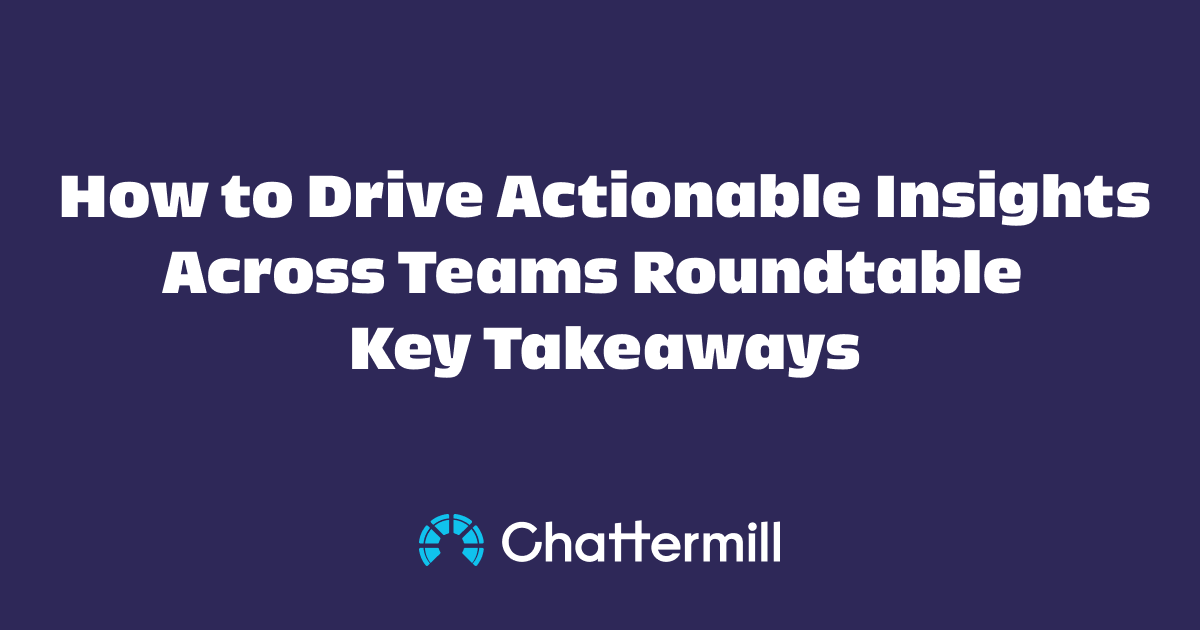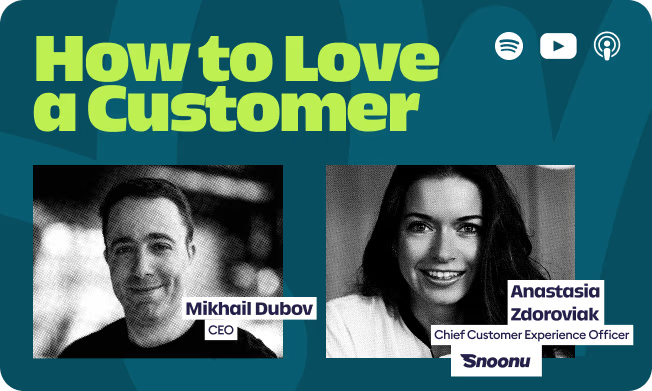Our latest Women of CX webinar is a deep dive into CX in the travel industry.
Joining Chattermill’s Anisha Kainth this past Wednesday was Louise Williams. Williams is Head of Customer Experience Design at TUI, and she draws on her nearly two decades working at the company to discuss how the brand continues to lead the travel vertical for CX.
Read on for our key takeaways from the webinar, and check out the video embed for the full interview and the Q&A.
How did you get into the world of CX?
William’s career started in the CRM team. She then held development roles, working with data, before the natural progressions into retention and loyalty.
‘We did a lot of research about why customers come back to us and what makes them a retained customer,’ Williams says. ‘We found that the biggest driver of loyalty was their previous experience.’
‘If you’ve had a great holiday, you don’t want to look around for other operators. You want to come back to TUI or to the one you’ve been to previously because it’s easier.’
Williams set up the first standalone CX team at TUI in the UK.
When you were setting up the CX team, did you find it easy to make a case for why it was important?
‘We were lucky. We had a good wind behind us,’ Williams says. ‘Our UK managing director believed in customer experience and could see a benefit in improving what we were already doing.’
Williams notes that CX at TUI was reasonably good at the time. There just wasn’t any governance or orchestration about it. The company was collecting feedback, but no one was acting on it.
Once she had established a small team, they worked with analytics to prove the value of increasing NPS or the importance of retention.
‘The more we did, the more we could prove our value and make our case,’ she adds. ‘But certainly, in those early days, we were quite fortunate to have a senior leadership team that believed in what we could do.’
How have the last 19 years shaped your understanding of what makes a good CX for your customers at TUI?
‘Over time, we get to listen to a lot of customers,’ Williams says. ‘I’m really lucky working for a travel company that when we get to experience the product, we get to travel to amazing places.’
‘Over those years of seeing our customers, whether in the destination or listening to focus groups or customer insight, you get a feeling of what our customers want. And it hasn’t really changed in those 19 years.’
‘There are nuances, and there are trends,’ she says. ‘But in terms of what customers want, it hasn’t changed. They want good service. They want quality. And they want it to be consistent.’
What has been your experience of being a woman in CX?
‘I’m not sure it’s much different to many other roles,’ Williams says. ‘But what I think I have found is it’s a lovely community. I’ve got a large network I speak to of customer experience professionals in other businesses, and everyone is always really willing to share and willing to learn from each other.’
‘I think diversity is the most important thing. Especially when you’ve got a large customer demographic like ours,’ she says. ‘Having diversity to empathize with those customers – whether older people in a team, younger people, people with families, people of different backgrounds and ethnicities.
Being a woman means I can empathize differently. I’m a mother with two children, and I can empathize with that demographic.’
Does TUI do a lot to support women and diversity in the organization?
‘Yes, definitely, TUI is a very good company in that respect,’ Williams says. ‘We’re a female-dominated company – especially with our frontline teams.’
The brand boasts several employee-led networks, with the latest rollout being a support scheme aimed explicitly at staff with families.
There is training for things like menopause, well-being, wellness, and physical, mental, and social health.
Williams also notes that colleague feedback is listened to and has recently resulted in enhanced maternity and family policies.
Is there much done for employees to ensure their voices are heard within the organization?
‘Yes. We do an annual voice of the employee survey,’ Williams says. ‘There are plans to increase that because annual isn’t enough.’
She also points to the vital link between employee experience and customer experience. ‘Especially in a business like ours,’ Williams says. ‘Where you’ve got a lot of customer-facing staff if they’re not happy, they’re not going to make experiences great for our customer.’
At TUI, the external promise to customers is Live Happy. This isn’t achievable without its staff being Makers of Happy.
‘So Makers of Happy is our, kind of, internal customer-centricity program that we drive from a CX point of view,’ Williams says, ‘and focusing on trying to increase that employee experience to also increase customer experience.’
What do TUI customers expect when they book online with you compared to what they might get in-store?
‘We know that customers book with us because they trust us. It’s our biggest brand driver,’ Williams says. ‘A big part of my role is that we try and maintain that trust and don’t erode it in any way.’
‘Customers expect quality – whether that’s service or product. They also want to feel looked after with no hidden surprises.’
When it comes to booking online vs. offline, Williams points to the fact that when customers book in-store, customer satisfaction scores are generally really high.
‘Because that retail advisor has usually spent time getting to know the customer,’ she notes. ‘They’ve recommended something that suits their needs, so it’s almost inevitable that they will have a great holiday.’
‘What we always try and do is emulate that online.’ Williams says. ‘It’s incredibly difficult because from a technical point of view, because you’ve got so many different variations of a holiday unless you have that one-to-one conversation, it’s quite difficult because you always have to present lots of options.’
Do you notice different demographics going in-store compared to online?
According to Williams, TUI sees different demographics across its online and offline channels. The brand has five core segments that they aim to maintain or grow – with those in-store often being more nervous about traveling and needing more reassurance.
Williams also notes that when she visits TUI stores on the high street, she often sees larger groups visiting and deliberating on where to travel together.
These are often from younger demographics – they have come to shop in person because it is easier to decide as a group altogether in that physical space.
In what ways have expectations changed in the industry over the last few years, and what lessons have you learned from this?
Williams points out that sometimes TUI has moved too fast on making changes.
For instance, they have removed reps from package holidays and quickly found out that there are still customers who don’t want to move over to the digital self-service model quite yet – despite that being where things are headed.
She also notes the need for post-covid flexibility. People want to be able to make changes. They want to be able to book something and decide last minute.
‘Our business model perhaps doesn’t support that particularly well at the moment,’ Williams says. ‘So, that’s where we perhaps get left behind.’
How do you ensure that your CX is aligned across the different channels?
TUI has a number of guiding principles that it has rolled out across the business internationally.
According to Williams, in the first place, the brand aims to be consistently welcoming to customers – whether they are going into a store in the UK or stepping onto a plane in Brussels.
Segmentation is consistent too. They have found that the needs of holidaymakers are primarily the same from market to market.
With over-arching principles and the same approach to customers across markets, TUI can keep things consistent from channel to channel.
How do you react to customer feedback?
‘Our goal is always to solve on the spot,’ Williams says. ‘You don’t want to return from your holiday and leave a complaint because you want a fix while in your destination. So, as soon as we hear about feedback, we try to resolve it there and then so your holiday can continue.’
‘Failing that, obviously, sometimes that doesn’t happen, and we don’t hear about those kinds of issues until the customer fills in their post-holiday survey,’ she adds. ‘All that customer feedback, we use it for quality management.’
Williams works closely with the Customer Quality team, whose role is to look at that customer feedback and consistently try to improve hotel quality, airline quality, and everything they can based on what customers say. Anything longer term then comes across to the CX design team, which works to ensure these issues don’t happen again.
Additionally, TUI has a detractor management strategy. When customers give NPS feedback ratings of 0-3, they try to call them to understand what went wrong and work out how to fix it next time.
How vital is buy-in at a senior level to ensure customer-centricity is in place at TUI?
‘I think it’s crucial, really,’ Williams says. ‘At the moment, we’ve got a CEO who wants to focus on getting a great quality experience, but I think it’s crucial; otherwise, you’re up against that commercial vs. customer argument. So you need somebody who believes – even if it’s just one person.’
How do you see CX evolving in the travel industry over the next few years?
For Williams, AI and sustainability are the next big things for travel CX.
‘I think AI will have a huge impact,’ she says. ‘We’re looking at how we can use AI to generate better quality responses for our customer contact teams – internally or externally direct to customers – to generate quicker responses.’
‘But also using it to generate hints and tips for customers,’ Williams adds. ‘We want to expand our portfolio to new destinations, but being able to use AI generation means we can do that a lot quicker.’
Simply, customers care more about traveling in a way that is less damaging to the environment. And this is at the forefront of Williams’ mind.
‘As sustainability becomes so high on customer’s agenda,’ she notes, ‘we need to offer those alternative methods of travel and ways to see the world.’















